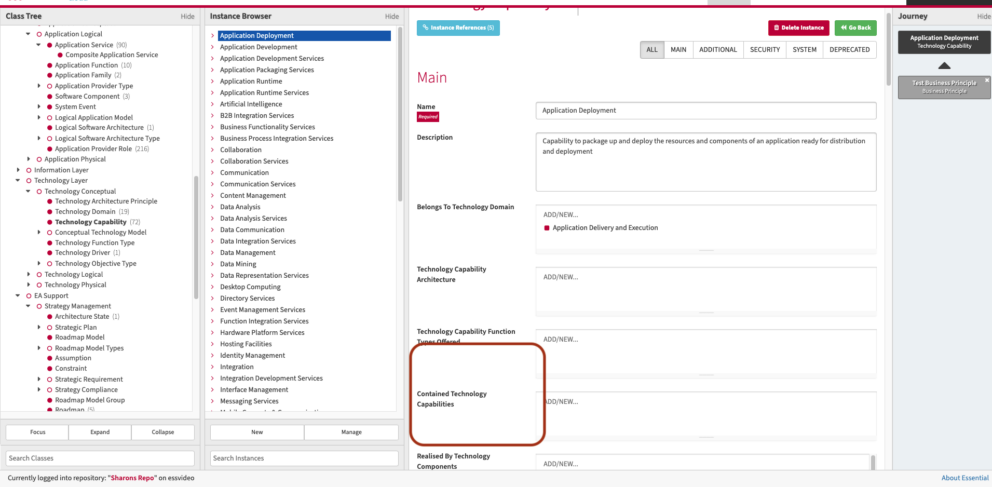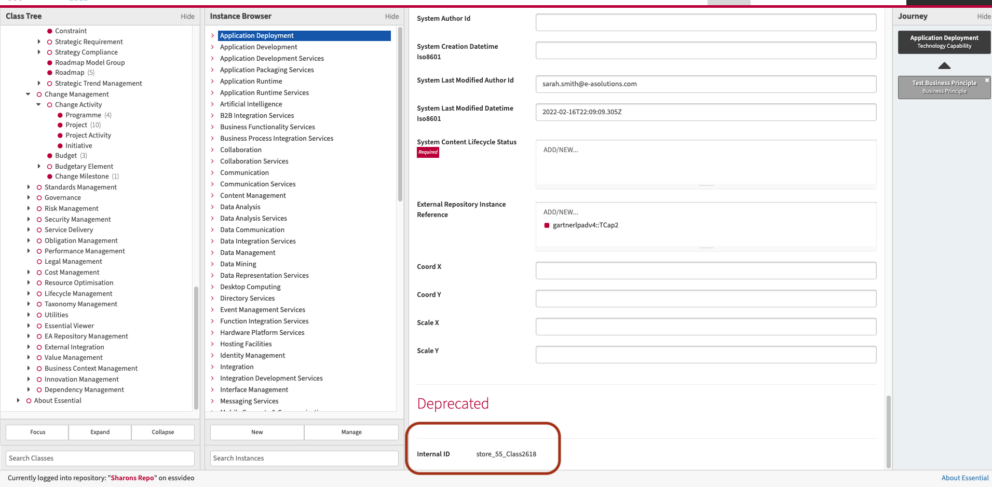Modelling in Essential
5 min
How do I capture microservices?
Microservices can be viewed from two perspectives. The functional perspective and the technical perspective. From a technical point of view, you might regard microservices as software architecture components and from a functional point of view as logical functional units.
Depending on your organisation’s perspective, you would capture them as Software_Component or Application_Provider, or even both.
To capture microservices as software components, you would capture them in the Software Component Class and then map them to the applications they provide services to.
To capture them as applications, you would capture them as application providers.
Is it possible to have a hierarchy of Technology Capabilities?
Yes, you can have a hierarchy of Technology Capabilities.
Cloud/Docker users can use the to arrange the hierarchy.
You can also add them using the Contained Technology Capabilities slot on the Technology Capability class.

technology hierarchy
I’m not sure where to start with my architecture model, what routes can I take?
This really depends on what your objectives are. The Essential Playbook outlines a number of different starting points depending on your maturity and objectives. You can also review the How to be Successful with Essential section which outlines our methodology.
If you are missing some data we offer Industry Business Capability Modelsa s DUPs, alongside APQC Process Models, which are reference models designed to give you a template to build from. Our Essential Set Up Manager can also create an Industry Business Capability Model and placeholder Business Processes and Application Services to kick start your capture.
I can’t find a class that I think should be present?
In Cloud and Docker, we hide new classes by default (based on client feedback), in Open Source they are always visible. If you can’t see a class in the Class Tree click Configure > Class Editor.
Look in the Class Browser and search for the hidden class. Select it then in the editor page click Layout. You will see a checkbox under Class Visibility called Show Class In Instance Browser, make sure that is checked. Return to the Capture tab and the class will now be visible.
Where can you see the internal ID allocated to an element? Are the IDs from Essential Launchpad used internally?
You can see the Essential Cloud Element ID in the meta-model at the bottom of each class instance. The IDs in the Launchpad are used by the Import Utility.

Internal IDs
How do I map TOGAF to the Essential Metamodel?
You will find TOGAF mappings documented in the file below
TOGAF to Essential Meta Model mapping v4.pdf
Updated 22 January 2024
